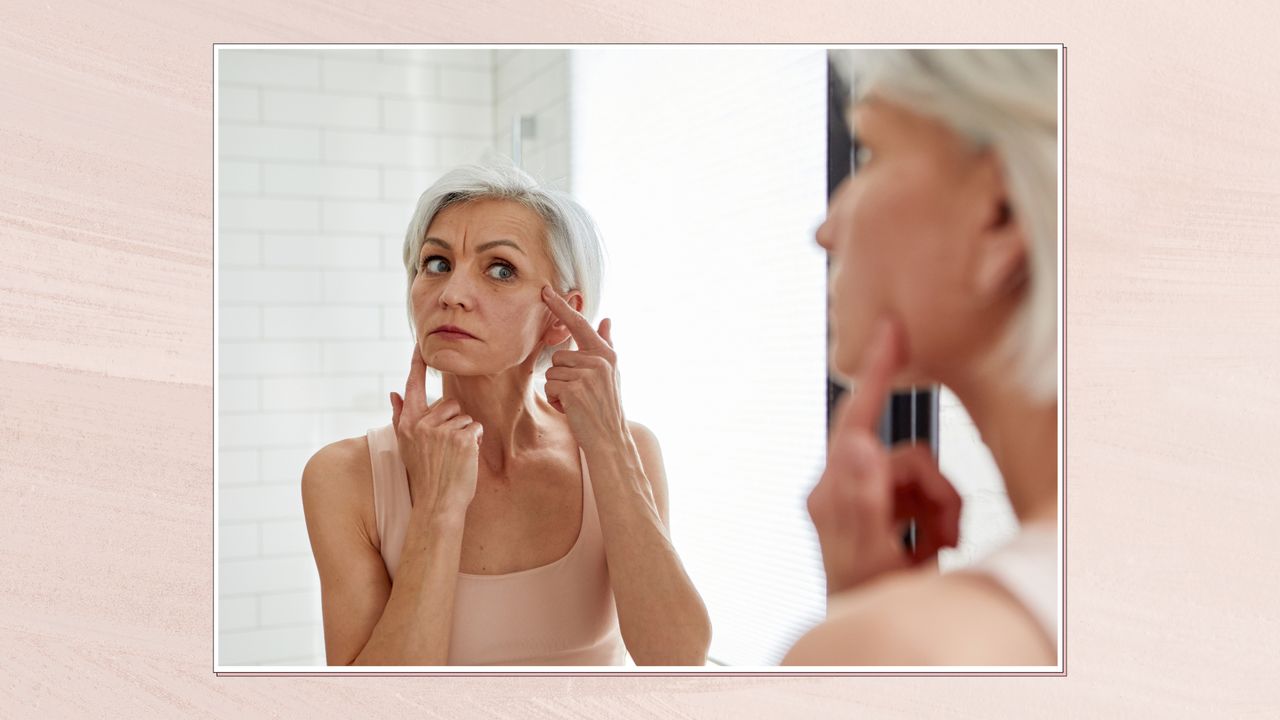What is ‘pillow face’ and how can you address it? The experts weigh in
Sometimes filler can go a little wrong, but there are always ways to get back on track


As someone who gets subtle fillers in her top lip and chin, I always advocate for aesthetic treatment transparency and zero shame. There is still so much judgement surrounding injectables, which I really resent; at the end of the day, modern feminism means being able to do what you choose with your appearance, as long as it is what you truly want rather than coming from societal pressures or outside influences.
However, as much as I fly the flag for enjoying what the world of injectables can offer, I do acknowledge that a certain phenomenon has been on the rise: something that's been coined "pillow face". Pillow face can result from the injection of too much filler, or filler that has been injected into the wrong areas. This can lead to a feeling of uniformity, where everybody begins to look "the same" and our sense of unique individuality goes out the window.
If this sounds like something you’re concerned about when going for fillers – or if you already feel like you may be seeing the effects – I spoke to two industry experts for what can be done about it.
Everything to know about 'pillow face', according to experts
What is ‘pillow face’ and how does it happen?
Dr. Christine Hall, A&E doctor and aesthetic doctor at the Taktouk Clinic explains that pillow face “is the direct reference to the appearance of a face that has been overfilled with dermal filler or [when] the filler has been placed incorrectly.” She adds that this often leads to end results that are defined by “puffiness and swelling” and “a more rounded face that can resemble a pillow” – hence the name.
Master facialist Katie White, founder of the award-winning re:lax Skin Studio, adds that this phenomenon can also take place “if filler has built up and potentially migrated over time, or it can be a case of existing filler retaining water. One of the primary compounds in dermal fillers is hyaluronic acid, therefore filler acts as a humectant and attracts water to it. This can lead to a puffy appearance, hence the term ‘pillow face’.”
For those who have a diet high in salt or alcohol, water retention may be even higher, which makes you more susceptible to pillow face, according to White.
What should you do if you experience pillow face?
From an aesthetic doctor’s point of view, there are a couple of approaches that can be taken to lessen the effects of ‘pillow face,’ either immediately or if you have a little more patience. The first, says Dr. Hall, is to do nothing and wait it out. “Dermal filler doesn’t last forever; reassess it in six months and see if the situation is improving,” she says. “Often, this is the route that patients take, particularly if they aren’t too bothered about the appearance.”
Sign up for the woman&home newsletter
Sign up to our free daily email for the latest royal and entertainment news, interesting opinion, expert advice on styling and beauty trends, and no-nonsense guides to the health and wellness questions you want answered.
If this is what you choose to do, White says that going for regular facials with the right practitioner can really help to ease any puffiness in the meantime. “Facial massage, manual lymphatic drainage, facial cupping, gua sha and microcurrent treatments are amazing for reducing water retention and pose no harm to the positioning of the filler,” she explains. “They work by manually moving the fluid or lymph towards the lymph nodes and draining them away from the face, ready to be excreted by the body. They leave you looking toned, sculpted and the opposite of ‘pillowy’.”
If you are more concerned by the effects, you have options. Dissolving your filler – and, if you so choose, starting again with a different injector or amount of filler – is usually a step you can take. “The majority of dermal filler these days is made from hyaluronic acid, which can be broken down by Hyaluronidase or Hyalase,” says Dr. Hall.
Dissolving filler comes with its own risks and drawbacks, so be sure to go to a reputable doctor or qualfied injector with medical training. “Hyalase works very quickly to dissolve filler but its limitation lies in the fact that it is non selective; it can’t differentiate between the hyaluronic acid in the filler and your natural [levels], and so there is a risk that while you dissolve your filler you dissolve some of that natural HA as well.” This can mean, in many cases, “you often need to refill the area subtly after dissolving.”
How can you avoid experiencing pillow face in the first place?
As Dr. Hall says, “prevention is better than cure” in this case. Finding a reliable, trusted and well-recommended injector is crucial for so many reasons – including to avoid experiencing unwanted effects such as pillow face.
“The important thing here is to find an injector who has your best interests at heart, is happy to guide you as to which treatment is best and ultimately, where needed, will say no sometimes,” she says. “An injector that gives you a long list of treatments or tells you that you need ‘X, Y, Z’ done is probably a red flag when it comes to trying to avoid pillow face. Remember that while dermal filler has many uses, its primary goal is in replacing volume in areas where volume has been lost.”
As well as finding the right person to inject your filler, you also need to manage and maintain your own expectations and ensure you don’t get pulled into a "more is more" approach, where you lose sight of what your initial goal was. This is where "perception shift" comes in, says Dr Hall: “This is the phenomenon that sees patients desiring multiple aesthetic procedures as their perception of themselves changes, with the end result looking like a person that no longer resembles you.”
She continues: “Lip filler is a classic example – patients will often come in after a few months stating that their lip filler has gone completely and that they need more. This is where a comparison with ‘before’ pictures is invaluable as, more often than not, it becomes clearly apparent that the lip filler hasn’t gone at all – the patient has simply grown accustomed to their new lips and when they get to see this firsthand they are happy. They then realise that their lips remain fuller and that they don’t necessarily need more [filler].”
Looking at older pictures can help in another way, too: “showing your injector photos of what you looked like 10, 20, 30 years ago can work so that the treatments that they perform are there to maintain or restore your natural appearance, but not make you look like someone else.”
Lastly, just remember that filler isn’t always the answer (at least, not all in one go, right away). “Listen to your aesthetic practitioner and come up with a treatment plan that directly addresses your concerns,” says Dr. Hall. “It may not be filler [that is the best course of action] at all.”
Rebecca (best known as Becky) is a freelance beauty editor and features writer with a decade worth of experience in the industry. She started her career at Glamour UK and has since worked in roles at titles and brands such as Eliza, Bustle and Space NK. She has written for British, US and Australian publications, from Marie Claire and Refinery29 to Stylist and The Coveteur.
She is a keen traveller and often works on the road, covering everything from beauty and fashion to sex, love and dating. Her favourite pieces to write are first person features born from her experiences in the world. She is proudly queer, feminist and pro-choice, and advocates for mental health issues and women's rights. You can check out her work at her portfolio and on her Instagram.
-
 Queen Mary’s tailored Parisian outfit will inspire you to wear shorts differently this spring
Queen Mary’s tailored Parisian outfit will inspire you to wear shorts differently this springQueen Mary of Denmark just made longer shorts look so chic in France and it's encouraged us to try this style.
By Emma Shacklock Published
-
 The Zara personalised bag collection brings luxury style to high street shoppers, just in time for spring
The Zara personalised bag collection brings luxury style to high street shoppers, just in time for springNow you can customise your Zara bag for just £3
By Molly Smith Published
